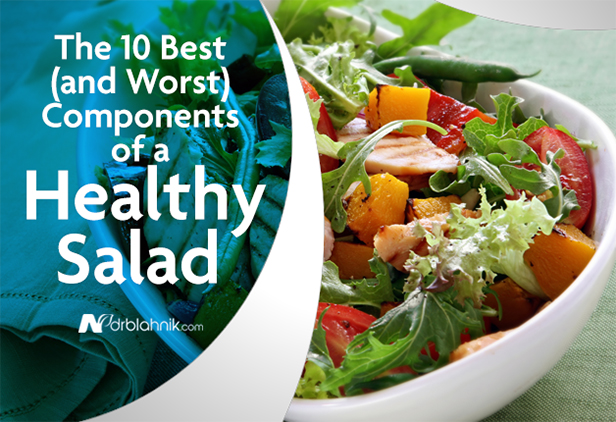By Vin Miller
Traditionally, chocolate has been considered to be an unhealthy indulgence for a variety of reasons. However, research has also shown that chocolate can provide a number of important health benefits. The question that remains is if these benefits outweigh chocolate’s potential to have adverse effects.
The first article in this series discussed the impressive health benefits of chocolate including its high antioxidant capacity, its potential to reduce the risk of heart disease and certain cancers, and its ability to improve circulation and even skin health. The second article described the less desirable characteristics of chocolate such as its potential to impair digestion, alter mood, and be contaminated with potentially toxic heavy metals. The intent of this final article is to consider how chocolate can fit into a truly healthy diet and to identify the factors that can make it more of a health promoting food than an indulgence.
How Chocolate Measures as a Healthy Food
In my opinion, the healthiest foods are those which can be eaten in their natural and whole form and will promote optimal health when consumed frequently. Despite its benefits, chocolate obviously doesn’t fall into this category. It’s highly processed which means that many of the nutrients from the original cacao beans are lost, damaged, or destroyed. Furthermore, because pure chocolate is extremely bitter, nearly all chocolate products contain added sugar, and many contain other unhealthy additives as well. The problems associated with sugar alone are enough to qualify chocolate as a food that shouldn’t be eaten in significant amounts, and this doesn’t take into account the undesirable nutrients that naturally exist in chocolate.
Much of the research that has shown chocolate to have beneficial effects is based on the daily consumption of a full chocolate bar or close to it. Most people would probably agree that eating this much chocolate on a regular basis is excessive and is likely to negate any possible health benefits. However, some of the research that has shown chocolate to have vascular and cognitive benefits is based on much more moderate consumption levels ranging from 6 to 10 grams per day1,2,3 which would be about the equivalent of one or two small squares.
Despite the health promoting aspects of chocolate, I think its less desirable characteristics still qualify it as an indulgence food that should be enjoyed in moderation, especially since it’s possible to obtain at least some of the health benefits from eating it in small amounts. As such, I think it would be questionable to use chocolate’s potential health benefits as justification to eat more of it. However, those who truly enjoy chocolate can take added pleasure from knowing that it has much more nutritional value than most other indulgence foods. In addition, those who are willing to be more selective about quality may be able to eat more of it without experiencing negative effects.
A Better Approach to Promoting Health and Preventing Disease
The health promoting benefits associated with chocolate can also be obtained by a well rounded healthy lifestyle, and the results of this approach are likely to be much more effective. Furthermore, regardless of how impressive the benefits of chocolate are, they won’t compensate for unhealthy habits. For example, it’s highly doubtful that the potential benefits of chocolate would make much of a difference for someone who’s eating a lot of processed food, dealing with too much stress, and not getting enough sleep.
Many of the beneficial nutrients found in chocolate can be obtained from other foods that can be eaten more frequently with fewer drawbacks. For example, apples, blackberries, blueberries, cherries, cranberries, grapes, raspberries, strawberries, almonds, pecans, hazelnuts, and walnuts have all been shown to be good sources of flavonoids,4,5 and unlike chocolate, they can easily be eaten in their natural whole form. As such, it would be inadvisable to eat chocolate specifically for its potential health benefits when more sensible alternatives are available.
In general, I think it would be a mistake to consider chocolate as a health promoting food without regarding basic healthy habits and the consumption of whole foods as much more important priorities. Although this may seem obvious, some people act as if the potential health benefits of a specific food or supplement will solve all of their problems. While this may be true in some cases, a broader perspective on health is generally more effective.
Using Chocolate to Boost Mood or Energy
Many people consistently rely on coffee to get through the day, and some people rely on sweets or other foods in a similar way. Because chocolate can provide a boost in both mood and energy, some people eat it primarily for these effects. As Julia Ross explains in The Mood Cure, consistently relying on foods to provide a lift in mood or energy can cause neurotransmitter deficiencies and lead to chronic problems including mood disorders and fatigue. Although there’s probably little harm in using chocolate to occasionally boost mood or energy, doing so on a regular basis can be problematic and difficult to stop. This is yet another reason why chocolate shouldn’t be consumed solely for its potential health benefits, especially in large amounts.
Maximizing Chocolate’s Benefits
Although I don’t consider chocolate to be a health food, it still makes a lot of sense for those who truly enjoy it to make it as healthy of an indulgence as possible. Fortunately, there are several ways to accomplish this.
The most important factor regarding the health promoting potential of chocolate is how much cacao it contains which is usually specified as a percentage. As you would expect, products with a higher percentage of cacao content will contain a larger quantity of beneficial nutrients while also containing less sugar and other additives. Chocolate that has a high percentage of cacao is referred to as dark chocolate which typically contains 70% cacao or more. Most chocolate products that are of good quality will list the percentage on the label. The ones that don’t are more likely to have a lower percentage. The only potential downside to dark chocolate is that it has a somewhat bitter taste which intensifies as the percentage of cacao increases. However, someone who mostly eats whole foods will be less likely to have a preference for excessive sweetness and more likely to appreciate the bitter taste.
As described in the previous article, the potential for the phytic acid, enzyme inhibitors, and oxolate found in chocolate to impair digestion is another important consideration. Although enzyme inhibitors are probably inactivated by the heating that chocolate undergoes during processing, this is much less likely to be the case for phytic acid and oxalate. Reducing phytic acid typically requires soaking, and reducing oxalate typically requires steaming or boiling. Unfortunately, this can only be done if you make your own chocolate from cocoa powder or cacao beans. Since phytic acid and oxalate are probably not much of a concern in small amounts, especially for those who consume a variety of nutritious foods, this added effort may only be worth while for those who wish to consume chocolate more frequently.
Avoiding Unnecessary and Potentially Harmful Ingredients
Because chocolate manufacturers use cacao beans that are grown all over the world, including places that have weak regulations for soil contamination and the use of agricultural chemicals, it’s a good idea to buy chocolate that is certified organic. Doing so should reduce your exposure to pesticide residues and possibly the heavy metals discussed in the previous article. As with any type of food, choosing chocolate that has the fewest ingredients is also a good idea. Some chocolate is made with undesirable ingredients such as soy derivatives or even trans fat. Even if these ingredients exist in a small enough amount to not pose much of a risk, why take the chance when there are better alternatives available?
For those who prefer milk chocolate, another ingredient that poses some concern is milk powder which is highly processed and often contains oxidized cholesterol.6 Research has found oxidized cholesterol to increase atherosclerosis in rabbits and mice, and it’s believed to do the same in humans.7,8,9
The chocolate that I typically eat contains only three ingredients: chocolate liquor, cocoa butter, and sugar. As I mentioned in the first article, chocolate liquor has no association with alcohol. It’s the mixture of cocoa powder and cocoa butter, both of which come from the cacao bean.
Supporting Fair Labor Practices
The chocolate industry seems to have a lot of ties to abusive labor practices including child slavery. This generally occurs with the farming of cacao beans, some of which are purchased by major chocolate manufacturers.10 An organized social movement called fair trade has been established to fight such labor practices and consists of four international networks that promote better trading and working conditions. These four networks are the Fairtrade Labeling Organizations International (FLO), the World Fair Trade Organization (WFTO), the Network of European Worldshops (NEWS), and the European Fair Trade Association (EFTA).11 You can support fair labor practices across the world by purchasing chocolate that’s labeled as fair trade through any organization that’s certified by one of these four networks.
My Favorite Chocolate
Despite my slightly negative opinion of chocolate, it’s one of my favorite indulgences. Although I’d like to eventually try making my own chocolate from cocoa powder, I currently resort to the convenience of buying chocolate bars. My three favorites are Vivani 72% Dark Chocolate, Askinosie 77% Dark Chocolate from the Philippines, and Askinosie 70% Dark Chocolate from Ecuador. The Vivani chocolate is certified organic, and although the Askinosie chocolate isn’t, they claim to buy from organic farmers. In fact, you can even learn about the farmers they buy from on their website. Although neither company has a fair trade designation on their labels, both claim to support fair labor practices.
If you have any favorite chocolate products or recipes of your own, please share them below!




